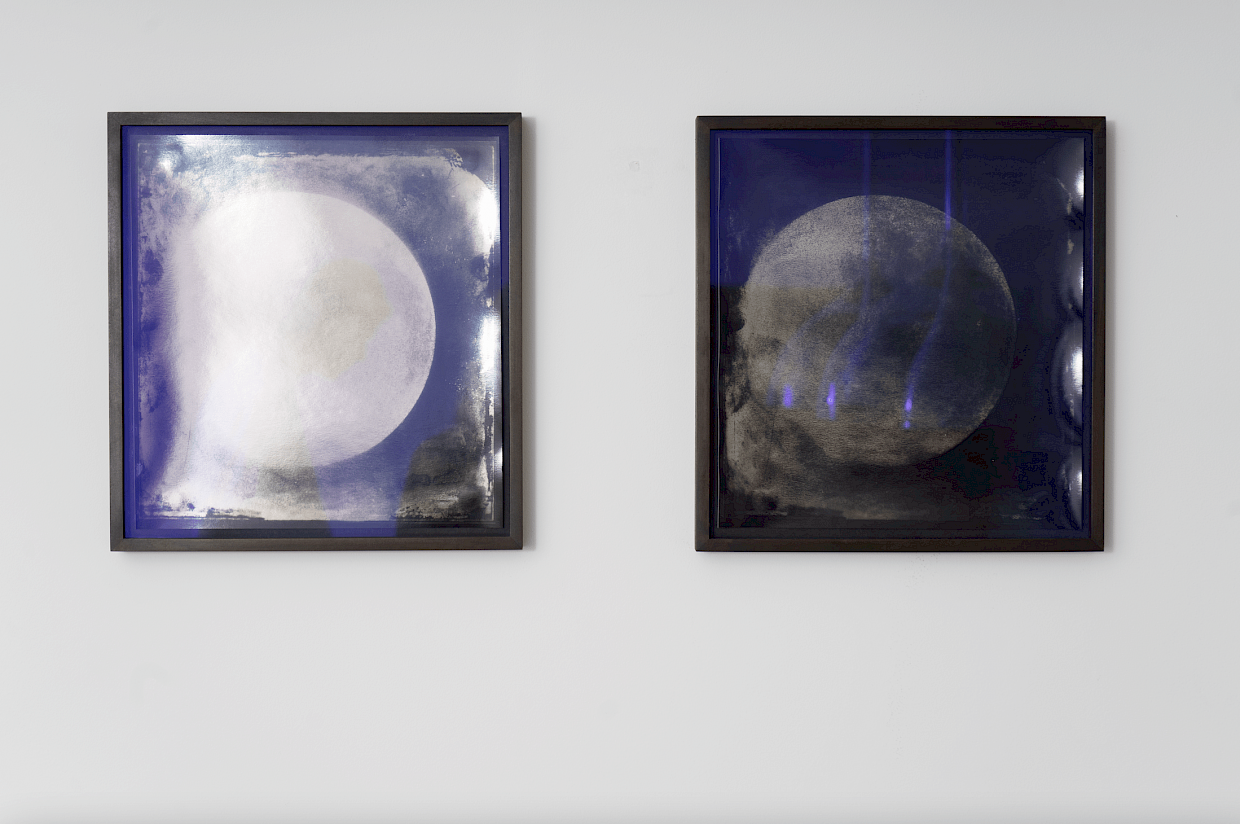

Lisa Oppenheim (b. 1975)
Heliogram 1876

Few celestial objects evoke feelings of romance so universally and instinctively as the sun and the moon, two subjects Lisa Oppenheim has studied and photographed extensively.
Besides heartfelt romanticism, there is of course also Romanticism in a formal sense: the (art) movement of the late 18th/early 19th century, in which the glorification of nature takes centre stage. After the Age of Reason, 19th century Romantics re-valued emotion above thinking, the spiritual above the material and the subjective above the objective. Man is insignificant and part of the universe and nature without overruling it. Historically, these 19th century sentiments have been instrumental to the emergence of the environmental movement in the third quarter of the 20th century. Now that nature and the environment are threatened in all kinds of ways, we see artists reverting to Romanticism on a wide scale, adding politically activist or emotional layers to their work. Lisa Oppenheim fits into this movement, as she’s a prime example of a socially engaged artist. In an aesthetically appealing manner, she touches on current affairs that are important to her.
In her series Heliogrammen (heliograms; literally, images created by sunlight), Oppenheim uses 19th century glass negatives by John and Henry Draper, which she found in the archives of the New York University. These were the very first photos of the sun taken through a telescope. The Drapers’ old notes that go with the negatives indicate the exact day they were made: 8 July, 1876. Oppenheim was given permission to borrow the glass negatives and over the course of 2011, she illuminated them a few times every month by using sunlight. The photo paper is illuminated by the sun and creates a new print of an old negative. The sheet is then treated with silver gelatin, which gives the white a silver shine. The fact that the sunlight differs day by day is reflected in the print. After a year of work, a series of Heliograms was made, four of which are now part of the A&O Shearman collection.
Oppenheim generally maintains a tight schedule, but there were certain days where she was too busy to illuminate the negatives and the photos could not be taken. Those days can be “seen” on the wall as empty space. The gaps show the passage of the artist’s days; those days, she was not working on her photograms. This gives the series a personal and biographical character. The photos of the Drapers once sprung from their scientific urge and curiosity about celestial bodies and the desire to capture them in a photographic image. Over time, the scientific content became obsolete and nowadays their prints are increasingly seen as art, something Oppenheim underlines with her own art.
